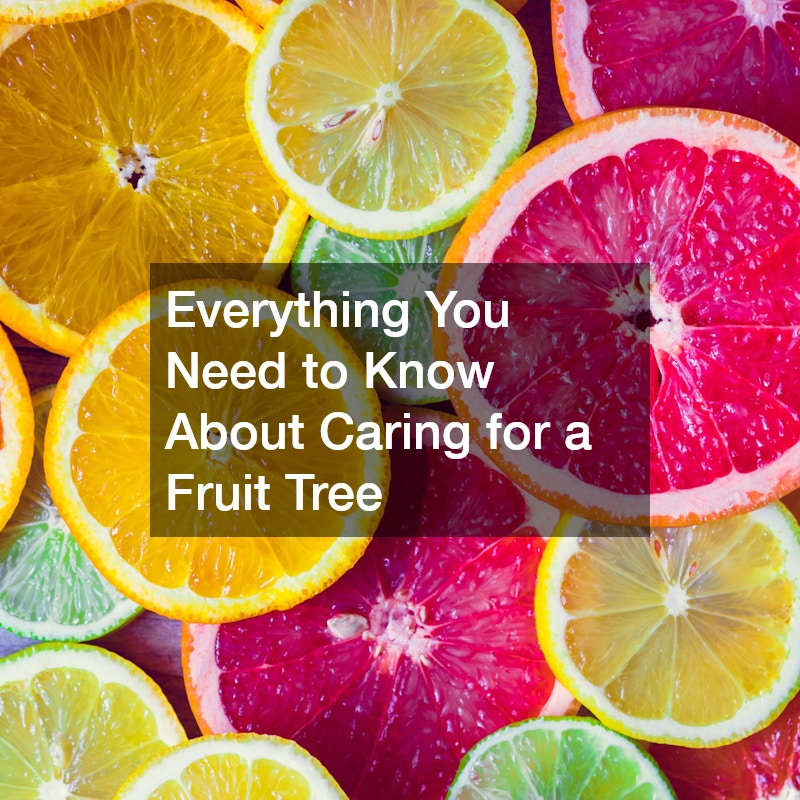Fruit trees can bring beauty, shade, and a delicious harvest to your garden. However, proper care is essential to ensure your tree thrives and produces high-quality fruit year after year. From planting to maintenance, understanding the fundamentals of fruit tree care will help your garden flourish. One key aspect of tree maintenance is tree trimming, which plays a critical role in the health and productivity of your tree. Here’s everything you need to know about caring for a fruit tree.
1. Choosing the Right Tree and Location
The first step in fruit tree care is selecting a tree suited to your climate, soil, and garden space. Consider factors such as sunlight requirements, soil drainage, and mature tree size. Most fruit trees require at least 6–8 hours of direct sunlight daily, as this supports optimal growth and fruit production. Planting your tree in well-draining soil helps prevent root rot and other issues. Once you’ve chosen the right tree and location, careful planning will make ongoing care, including tree trimming, more effective.
2. Proper Watering Techniques
Water is essential for a fruit tree’s growth, but overwatering or underwatering can harm it. Young trees require frequent watering to establish strong roots, while mature trees need deep, infrequent watering. A general rule is to water deeply once or twice a week, depending on rainfall and soil type. Using mulch around the base of the tree helps retain soil moisture and keeps roots cool. Adequate hydration also supports healthy branches, making tree trimming safer and more efficient when the time comes.
3. Fertilization and Soil Care
Fertilizing your fruit tree provides essential nutrients to promote growth and fruit production. Most fruit trees benefit from a balanced fertilizer applied in early spring before new growth begins. Avoid over-fertilizing, as this can cause excessive leafy growth at the expense of fruit quality. Testing your soil every few years helps you adjust nutrient levels for optimal tree health. A well-nourished tree responds better to tree trimming, and pruning cuts heal faster on strong, healthy branches.
4. The Importance of Tree Trimming
Tree trimming is a vital part of fruit tree care. Regular pruning removes dead, diseased, or damaged branches, improving air circulation and sunlight penetration. This not only enhances fruit quality but also reduces the risk of pests and diseases. Proper tree trimming techniques include cutting at the right angle, avoiding excessive removal of foliage, and shaping the tree to maintain a balanced structure. The best time for pruning is usually late winter or early spring, before new growth begins, though some minor pruning can be done during the growing season.
5. Pest and Disease Management
Fruit trees are susceptible to various pests and diseases that can affect both tree health and fruit production. Regularly inspecting your tree for signs of infestation, such as holes in leaves, discolored fruit, or unusual growths, allows you to take early action. Integrated pest management, including natural predators, targeted treatments, and proper sanitation, helps keep problems under control. Effective tree trimming also contributes by removing affected branches and preventing the spread of diseases.
6. Supporting Young Trees
Young fruit trees may need extra support as they grow. Staking helps prevent wind damage and encourages upright growth. Avoid tying the tree too tightly, as this can damage the bark and restrict growth. Proper tree trimming at an early stage helps shape the tree, establish strong scaffolding branches, and promote long-term stability. A well-shaped young tree requires less corrective pruning in the future and will produce healthier fruit.
7. Harvesting and Seasonal Care
Knowing when and how to harvest your fruit is essential for enjoying the best flavor and preventing damage to the tree. Most fruit should be picked when it reaches full color and slightly softens, depending on the variety. After harvesting, continue regular maintenance, including light tree trimming, to prepare the tree for the next season. Seasonal care, such as mulching, watering, and fertilizing, ensures your fruit tree remains productive year after year.
Caring for a fruit tree requires attention, knowledge, and consistent maintenance. From choosing the right location and watering properly to fertilizing and managing pests, each step contributes to a healthy, fruitful tree. Among these practices, tree trimming stands out as a critical task that promotes growth, improves fruit quality, and prevents disease. By following these guidelines and performing regular maintenance, you can enjoy the beauty and bounty of a healthy fruit tree in your garden for many seasons to come.





